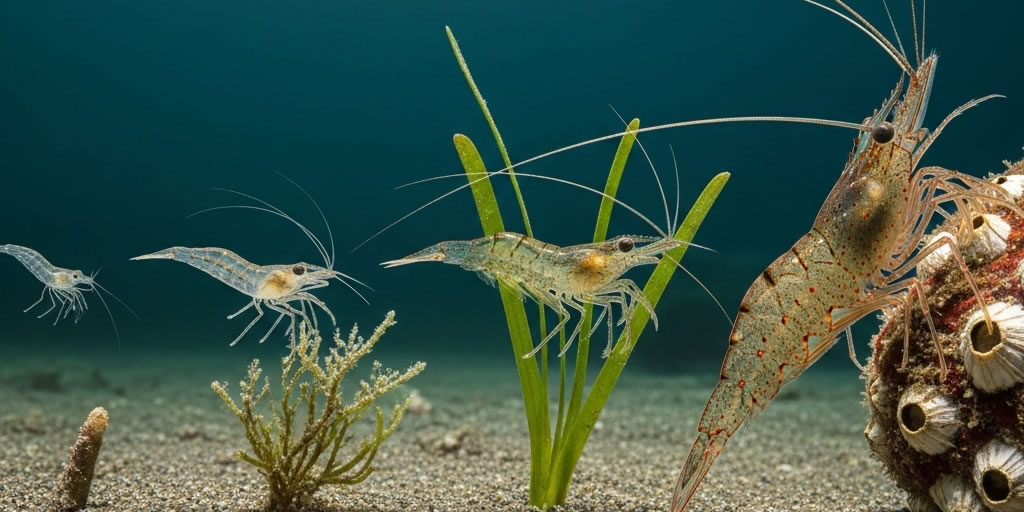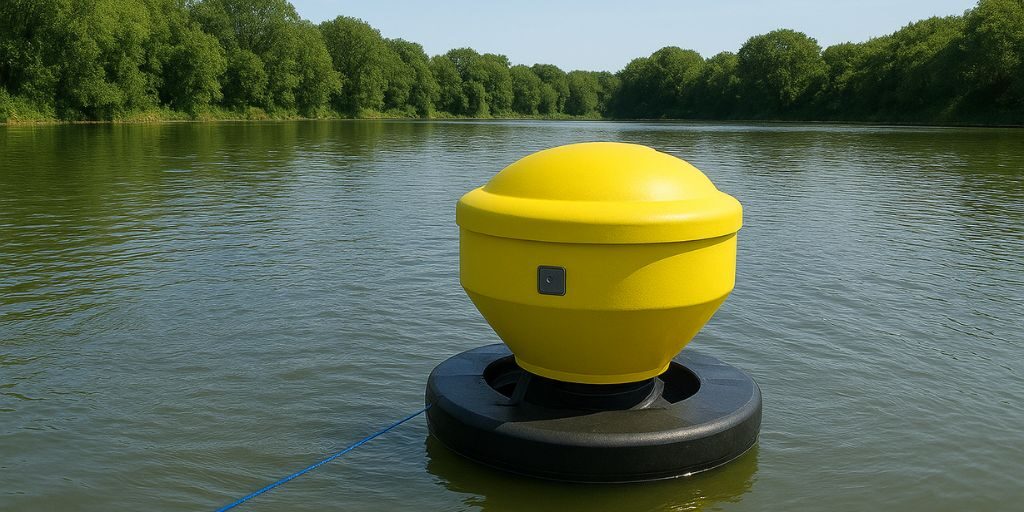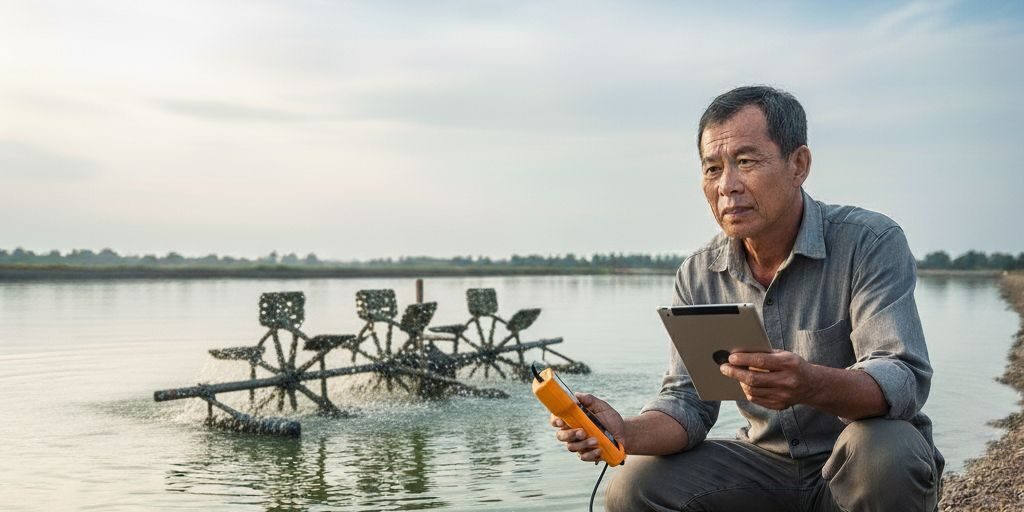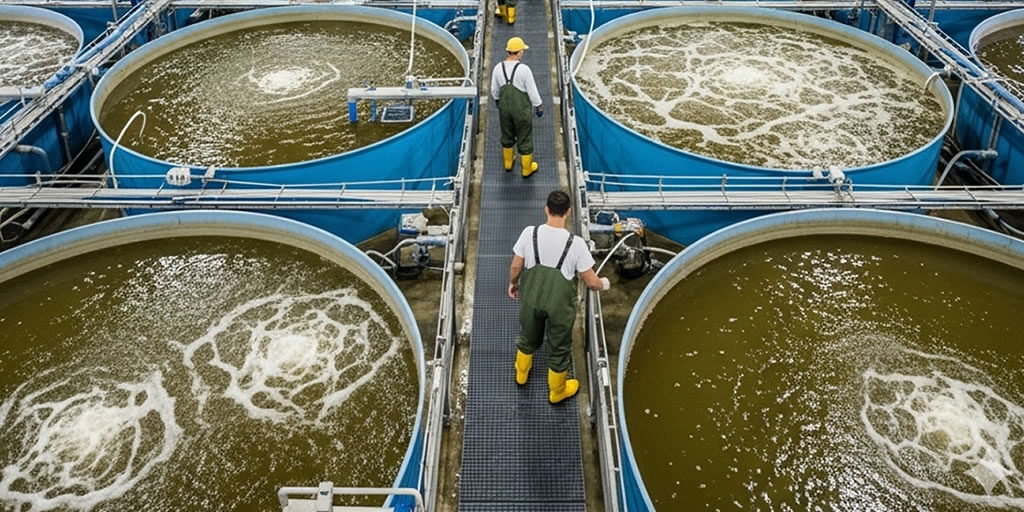- Software Gestor para Aquicultura
- (85) 2139-6730
- contato@despesca.com.br
Genetic Improvement in Aquaculture: The Foundation for High Productivity and Health on Your Farm

On-Farm Inspections: Be Prepared. What Are the Main Items Checked by Environmental and Health Agencies?
03/09/2025
Organic Aquaculture: What It Takes to Produce and Certify Your Shrimp or Fish
08/09/2025Competitiveness in modern aquaculture is increasingly dependent on the science and technology applied to farming. Among the pillars that support a successful operation, the genetic quality of the stock stands out as one of the investments with the highest return. The transition from relying on wild-caught post-larvae and fingerlings to using domesticated and genetically selected lines represents a qualitative leap for the sector, allowing producers to achieve previously unattainable levels of productivity and predictability.
Maximizing Productivity Through Genetics
Genetic improvement programs focus on selecting for traits of high zootechnical value. The most sought-after is the growth rate. Improved strains of shrimp (Litopenaeus vannamei), for example, can show consistently higher weekly weight gains, which shortens the production cycle by weeks, optimizing the use of farm infrastructure and increasing the number of cycles per year. Similarly, in tilapia, selection for rapid growth and better fillet yield directly impacts the profitability of the final product.
Another crucial factor is feed efficiency. Animals genetically selected for a better feed conversion ratio (FCR) consume less feed to produce the same amount of biomass. A reduction of 0.1 or 0.2 in the FCR, while seemingly small, represents massive savings in production costs over a cycle, given that feed can account for over 60% of operational expenses.
Disease Resistance: The Pillar of Sustainability
Perhaps the most significant advancement provided by genetic improvement is the development of disease-resistant lines. In the past, outbreaks of pathogens like White Spot Syndrome Virus (WSSV) or Acute Hepatopancreatic Necrosis Disease (AHPND) in shrimp, and Streptococcosis in tilapia, were responsible for devastating losses. Today, producers have access to lines classified in different ways:
- SPF (Specific Pathogen Free): Animals that are free of specific pathogens. Their advantage lies in not introducing diseases to the farm, but they require a very high level of biosecurity to maintain this status.
- SPR (Specific Pathogen Resistant) / SPT (Specific Pathogen Tolerant): Animals that have been selected to resist or tolerate infection by specific pathogens. They can survive and continue to grow even in environments where a sanitary challenge exists, providing fundamental robustness for production stability.
Using these lines reduces mortality, lessens the need for chemical and medicinal interventions, and provides greater security for production planning.
The Synergy Between Genetics and Management
It is crucial to understand that the genetic potential of a superior line is only fully expressed under proper management conditions. Investing in high-performance animals is pointless if water quality, nutrition, and biosecurity protocols are deficient. Correct acclimation of post-larvae and fingerlings, providing balanced and phase-specific feeds, and constant monitoring of parameters like dissolved oxygen, ammonia, and pH are prerequisites for success.
To validate the genetic investment, it is essential for the producer to maintain detailed records of each batch’s performance. Tracking the growth curve, calculating the feed conversion ratio, and recording survival rates are essential practices. This data allows for an objective comparison of the performance of different lines and suppliers, informing future decisions and optimizing the farm’s production strategy. The adoption of advanced genetics must, therefore, go hand-in-hand with the professionalization of management and zootechnical practices.
Practical Checklist for Selecting a Genetics Supplier
Choosing the right hatchery or fish farm is a critical decision. Use this checklist to evaluate potential suppliers and ensure a safe investment.
- Reputation and History: Research the supplier’s time in the market. Ask for references and speak with other producers who have purchased from the company to understand their experiences.
- Certifications and Health Status: Request all sanitary documentation, such as reports proving SPF or SPR/SPT status for diseases relevant to your region. Verify that the hatchery has certifications from official bodies and follows a rigorous biosecurity program.
- Transparency about the Lineage: Ask about the origin of the line (imported broodstock, in-house development), the selected traits (growth, resistance to which specific disease, etc.), and request zootechnical performance data (expected growth chart, FCR).
- Delivery Assessment: Before closing the deal, understand the quality parameters at delivery. For shrimp post-larvae, check for size uniformity, motility, pigmentation, and perform stress tests (salinity and formalin). For fingerlings, look for the absence of deformities and active behavior in the tank.
- Logistics and Transportation: Inquire about their transport methods. Does the supplier use appropriate packaging with temperature and oxygen control to ensure survival and minimize animal stress until they reach your farm?
- After-Sales Support: A good supplier not only sells but also offers support. Check if the company provides technical assistance to help with acclimation protocols and answer questions during the cycle.




